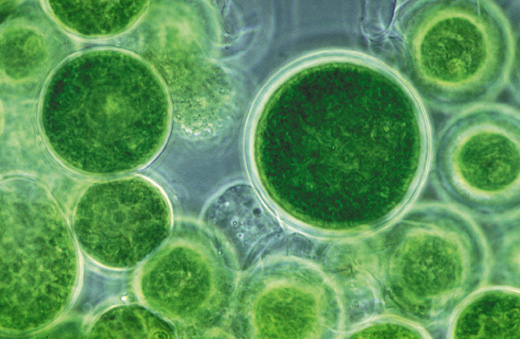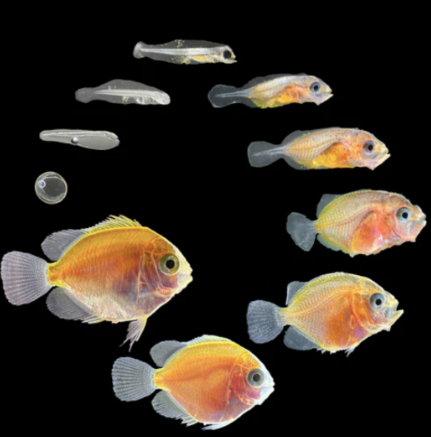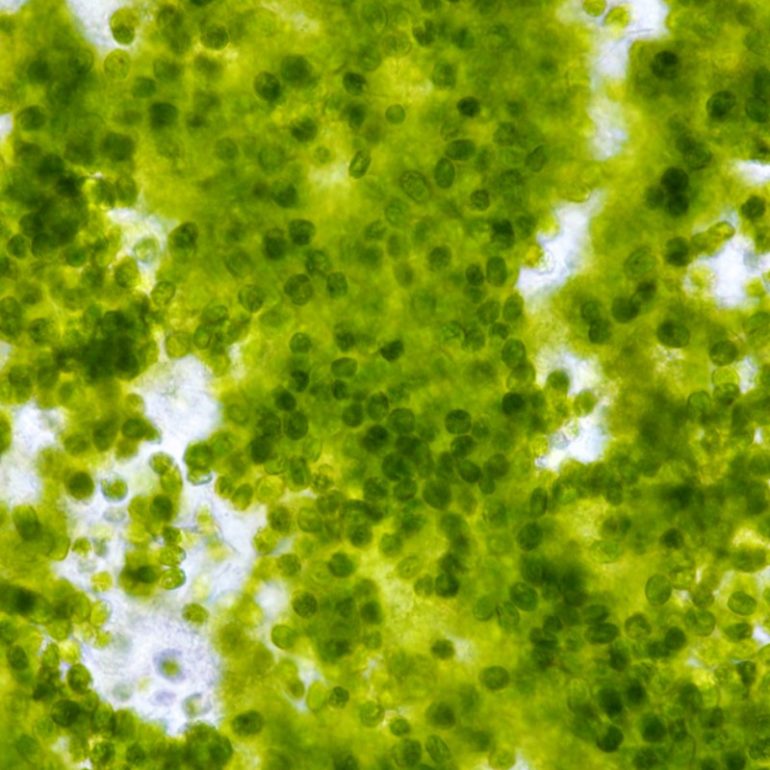Phycologist Taras V Pleskun answers more of your most frequently asked questions on Phytoplankton.
Is the algae I scrape off the front glass phytoplankton?
Yes and No! Though this is more an exercise in wording, there is a profound difference between algae that needs to be scraped off the glass from phytoplankton in general and especially the microalgae species commonly offered as live feed.
The term phytoplankton refers to anything suspended in the water column which is conducting photosynthesis. This does not necessarily pertain to algae which exists as a biofilm or other superstructure attached to glass, rockwork, etc. Besides being an esoteric discrimination of terms, there are profound differences in the biology and behavior of suspended cells versus those in biofilms. This is even more fascinating considering the same species of algae can exist either as suspended cells or as a biofilm and can alternate between the two growth states according to environmental conditions and microbial ecology. But overall, the brown algae associated with healthy seasoned reef aquariums are likely various diatom species.
Diatoms are able to form a glass skeleton made of silicate and commonly form chains and other structures to maintain a position near light (i.e. the glass). These are likely harmless enough and can provide a tremendous nutrition source to snails and other surface grazers. Diatoms are known for their exceptional nutritional quality and many species (Thallasoria, Chaetoceros, Phaeodactylum, Skeletonema, etc.) have been domesticated for larviculture and are common ingredients in reef aquarium foods.
Other slimes and attached algae common to reef aquariums are an array of dinoflagellate, cyanobacteria, and green microalgae species. The trick is that many of these pest species can grow in abundance because they are indigestible, have toxins, and may alter water chemistry to suit themselves. Furthermore, identifying these dominant pests can be difficult (even through PCR) as they are often part of a species complex of saltwater fungi, archaea, etc. all designed to conquer and ruin tank aesthetics. This is why it is important to know the species of phytoplankton being dosed in the reef aquarium…as growth on the glass can be golden dust or the beginnings of a horrendous horde.

Do marine fish larvae eat phytoplankton?
Microalgae were originally domesticated as a way to cultivate marine fish and invertebrate larvae. There is a reason why the saltwater aquarium hobby has always been behind the freshwater aquarium industry in terms of aquacultured species. Many freshwater fish species invest proportionally more resources into their young than marine species. Freshwater fish eggs are on average larger and produce fry rather than sensitive larvae. These fry can be first fed a formulated micro diet if not Artemia, Daphnia, Moina, or other relatively large live feed.
This is not the case with the broad majority of fish species enjoyed in the reef aquarium hobby. Many of these species broadcast spawn thousands of eggs into the tide with the hopes that but a few survive to adulthood. Each marine egg is microscopic and has but an oil droplet (as opposed to a yolk). This oil droplet will only provide enough golden fats (ARA, DHA, EPA) for most larvae to survive a few hours/days post-hatch without feeding. This has been the trick of the thicket for breeding marine fish species: how do you find something small enough that microscopic fish larvae can eat it?
The answer has traditionally been SS rotifers (Brachionus rotundiformis) which marine fish can and will eat. But forage such as this is too deficient in golden fats to sustain marine fish. This is where domesticated algae such as Tisochrysis lutea shines, where it has allowed forage, such as rotifers, to be gut-loaded and successfully deliver elevated nutrition to the larvae. Greenwater larviculture is a hatchery technique where green microalgae (Nannochloropsis, Tetraselmis, etc.) are used to darken the water for marine larvae sensitive to light. High algae concentrations also continuously gut-load, rotifers, ciliates, artemia, and other forage at the same time.
Many pelagic fish species have larvae with mouths too small for rotifers and thus, domesticated microalgae have been instrumental in the aquaculture of sensitive pelagic copepod species (Parvocalanus crassirostris, Pseudodiaptomus pelagicus, Acartia tonsa, etc.), whose nauplii are the precious first feed needed to satisfy the delicate larvae of mandarins, tangs, wrasses, angelfish, damsels, rabbitfish, groupers, snappers, cobia, tuna and countless other marine fish species which will need to be sustainably farmed in the 21st Century.

Do Phyto mixes contain nutrients and trace elements? Or pollutants?
Live phytoplankton should only have three ingredients:
- The advertised phytoplankton species/strain (and its associated microbiome).
- The saltwater used to culture the phytoplankton.
- The fertilizer used to cultivate the phytoplankton.
As far as pollutants go, that is limited by the source of the saltwater used in the microalgae culture. If it is the product of an RO/DI unit and then mixed with a reputable marine salt in a somewhat sterile vat then it can be assumed that most novel chemical pollutants have been removed. This guarantee is not the same in algae grown in large-scale outdoor ponds.
In the past, I grew microalgae for various shellfish hatcheries and I will say that using raw ocean seawater (even when thoroughly filtered and sterilized) often produced novel problems…especially after heavy rains. The fertilizer that I use (and that is commonly used) is F/2 Guillard’s Formula. Robert R. L. Guillard was one of the original sages of modern phycology. He developed a marine fertilizer designed to enhance ocean water for accelerated microalgae culture…I will have to write an article on him at some point.
The fertilizer comes in two parts which do not store well together long term. Part A is a mix of trace elements (iron, manganese, cobalt, zinc, copper, and molybdate). Part B is a vitamin mix (sodium nitrate, monosodium phosphate, thiamine, vitamin B1, vitamin B12). The fertilizer is designed to provide these in surplus because the average phytoplankton culture will increase over 1000-fold in the first few days of its growth. By the time the culture is a dark color, it will likely be between 1-6 million cells/ml.
Depending on the microalgae species, this will likely be well into its stationary growth phase…a period where the algae cells begin to experience resource exhaustion and store energy-dense compounds (fats). Algae in this state have likely attenuated its fertilized water back down to normal levels. At the Top Shelf Aquatics Farm, we regularly conduct ICP tests and have not observed any major spikes in any trace element associated with our daily phytoplankton feedings.
As far as nutrients go, phytoplankton cells are food and therefore contain nitrates and phosphates that will be excreted when consumed. However, living microalgae cells will consume nitrate and phosphate through photosynthesis until they are consumed or skimmed. Dissolved nutrients assimilated in phytoplankton cells cease to be waste in the reef aquarium and can be reclaimed as planktonic forage or exported as skimmate.



